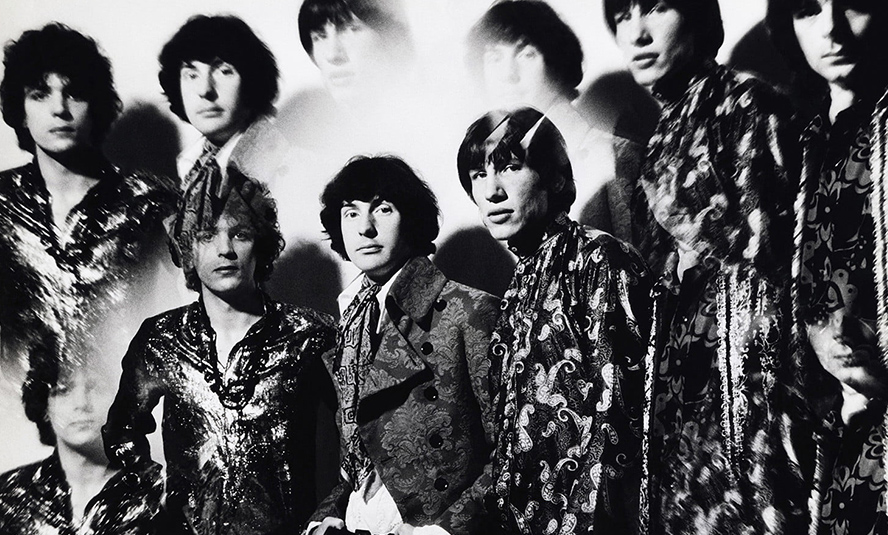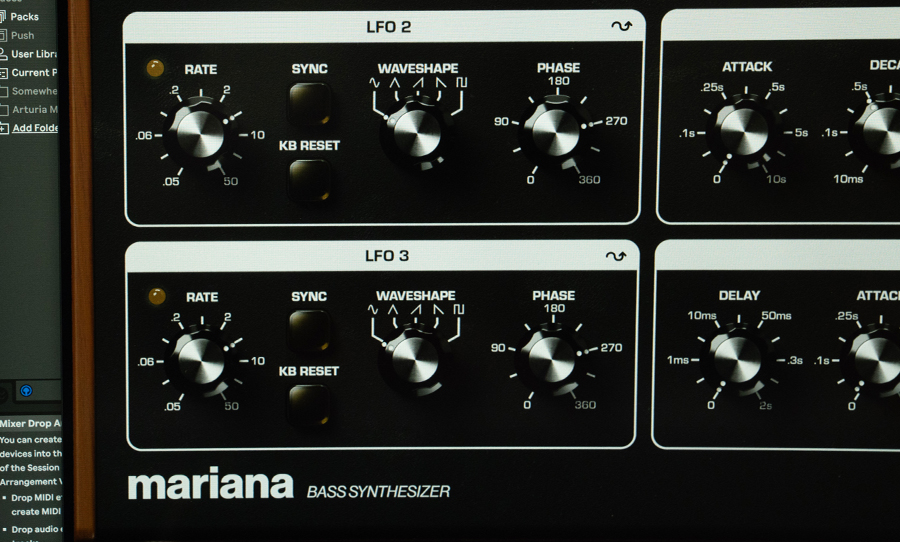If the 1950s was the dawn of rock ‘n’ roll, then the ‘60s were dedicated to advancement in the form of a tidal wave known as “progressive rock.”
In a nutshell, prog rock was what happened when rock musicians discovered a bunch of shiny new toys (such as stereophonic audio, multi-track recorders, synthesisers, and sound effects), and began introducing them into the realm of pop. And its influence has reverberated throughout sonic history ever since.
The late 60s ushered in a tidal wave of change, with progressive rock exploring the full extent of what could be done in and out of the studio.
During this time, FM radio continued its slow triumph over AM by blasting out these sounds in hi-fi glory. Simultaneously, the cassette and cartridge were battling it out for dominion in the home and automobile audio market.
Cassette tape, that humble invention, seems to have stood victorious, doubtless due to Philips Electrical graciously waiving a patent (not to mention spending over $1.2 million on promotion from 1966 onwards). By the end of the ’60s, every record company in the business was putting out their dense, multi-layered prog rock on cassette catalogues. But what was happening behind the scenes during this time? Let’s take a look.
Tracks Over Tracks
The music industry was forever changed by the wonders of multi-track recording – and with the gradual increase in track numbers bloomed the musical imagination.
It technically all began in the ‘50s with Les Paul’s ground-breaking discovery of 8-track recording (a concept that was then commercialised by Ampex). However, it was the 4-track that dominated the better part of ‘60s rock ‘n’ roll. This was no doubt thanks to the likes of The Beatles, The Rolling Stones, and Phil Spector, whose classic albums were recorded on 4-track machines.
Reduction mixing (also known as “bouncing”) was responsible for the unprecedented density of composition found on works like The Beatles’ Revolver. The musical pioneers at Abbey Road, especially Beatles producer George Martin, mastered the then-revolutionary technique of mixing multiple tracks from one machine and “bouncing them down” to a single track of another (Martin did this using on pair of Studer J37s).
In the case of The Beach Boys’ 1966 classic Pet Sounds, both 4- and 8-track recorders were utilised (to the absolute fullest) by producer Brian Wilson. All instrumental tracks were first recorded on to a 4-track and then reduced to a mono mix, which was then dubbed onto a single track of an 8-track machine. Six other tracks were reserved for the Beach Boys’ six vocalists, and the final track for finishing touches; all of these were finally mastered to one single track.
Also made possible via multi-track recorders was a plethora of studio-specific tape effects, such as slap-back echo and tape flanging. Of the latter, psychedelic rock was defined by the spacey weirdness of phasing, achieved by playing two copies of the same recording one to five milliseconds out of sync. Altering the speed of one of those machines would produce some approximation of the flanger/chorus effects we know and love today. Such an effect can be heard in the trance-like verse vocals of Lucy In The Sky With Diamonds, which exemplified the Beatles making the most of their 4-track.
Instruments That Sound Like Other Instruments
Long before the synthesiser stimulated the invention of hip hop and disco, it revolutionised rock ‘n’ roll. With the advent of electronic instrumentation emerged the multi-pronged network of progressive rockers who delighted in playing with a wider array of sounds than the traditional guitar-bass-drums combo afforded. Through such play came the characteristic bubbling synth tones of psychedelia and the ethereal ambiance of space rock.
Throughout the ’60s, commercial rock music was closely associated with two M’s – the Mellotron, and the Moog.
An early sampler keyboard, the Mellotron was birthed out of one simple idea – what if we could play instruments, but also… not have to play them? Hence the ingeniousness of a keyboard based on pre-recorded tape loops. Originally invented by an American, Harry Chamberlin, the Mellotron was commercialised (or more accurately, appropriated, improved on, and then bought) by the English Bradley brothers behind Streetly Electronics.
Chamberlin’s early models set the 35-key standard, but Bradmatic Ltd. fixed many of his design flaws (such as a faulty tape-scrolling mechanism and uneven replay heads), thus making the contraption better fit for mass-consumption.
Featured famously in The Beatles’ ’67 smash Strawberry Fields Forever (on which its flute setting was demonstrated magically), the Mellotron has also been employed in the works of everyone from Aerosmith to Black Sabbath to Genesis.
The Mellotron was, however, fated to be overtaken by the Moog – a modular, voltage-controlled analog synthesiser that took sonic experimentation to the next level. Under Robert Moog’s design, all features of the instrument were controlled by a uniform system of voltages, with respective voltage magnitude regulating oscillator frequency, gain, cutoff frequency, and more. Moog’s also typically ran on a simple and elegant one-volt-per-octave rule wherein positive voltage raised pitch.
Expanding on these modest principles, separate modules of the instrument could then be used to modify the functions of others (modulators, envelope filters, whatever) via voltage, engendering a virtually limitless range of sound signals. It’s no wonder, then, that the psychedelic progressives jumped on it.
The first known usage of the Moog in pop music was The Zodiac: Cosmic Sounds (1967), which was as off-the-wall as advertised and featured the then-novel synthesiser on everything from weird ambiance to shrill percussion to actual melodies. Other notable ‘67 uses included The Doors’ Strange Days, for modulation of Morrison’s vocals, and The Monkees’ Pisces, Aquarius, Capricorn & Jones Ltd., arguably the most well-known example of “space-pop” to incriminate the Moog.
Bad (Meaning Good) Noise
Throughout the 60s, rock ‘n’ roll became well and truly embroiled in an obsession with guitar effects – a relationship that would continue flourish into the 70s and beyond. Originally considered to be “bad sounds” in the world of jazz and big band, the colourful varieties of fuzz and overdrive were later embraced by rockers in all their artistic rebellion. High-gain amplifiers and fuzz boxes came first, heralded by the likes of The Who and The Rolling Stones; these were promptly followed by delay, wah, flangers, and vibe effects pedals in their multitudes.
Jim Marshall can arguably be credited for kick-starting the sound of an era, on account of developing the JTM-45 in ’62, a high-gain amplifier that would go on to rule the decade’s hard rock scene. So enamoured of it was Pete Townshend that the Marshall company even built its first 8×12 stack speaker cabinet for him, in addition to a commissioned 100-watt amp.
In that same year, Gibson put out the first commercially successful fuzz box – the Maestro Fuzz-Tone, which was originally on the market for just $40; after Keith Richards jumped on it for the Stones’ 1965 smash Satisfaction, the whole fuzz arena veritably exploded.
Another notable figure was the wah-wah pedal, which boomed in popularity alongside the emergence of psychedelia. Jimi Hendrix was, of course, a major proponent of the wah effect, using it deliciously on tracks like Little Miss Lover and Voodoo Child. The latter made use of Vox’s V846 wah, which turned Hendrix’s Fender Strat into a sultry, wailing beast.
Another notable player was the Crybaby Wah Wah, originally designed by engineer Brad Plunkett of the Thomas Organ company for Vox in 1966 (and then later appropriated by Dunlop). Eric Clapton is perhaps the known endorser of the Crybaby, heard on Cream’s Tales of Brave Ulyssess and White Room.
Sound Around Sound
The ‘60s marked not only new techniques in studio production, but also great leaps forward in live performance. It was on 12 May 1967 that Pink Floyd that put on the first ever surround-sound concert at London’s Queen Elizabeth venue. This concert, known as “Games For May,” was made possible thanks to a quadrophonic speaker system originating through experimentation at Abbey Road Studios. It all started with the simple idea of hooking an extra set of speakers to a stereo set.
A techie by the name of Bernard Speight then designed a contraption called the “Azimuth Coordinator.” This was a box with four 90-degree “potentiometers” for the purpose of distributing sound across the concert hall.
As explained by drummer Nick Mason in his 2005 memoir Inside Out, the Azimuth operated by a simple joystick that could distribute sound to speakers set up in each corner of the hall. Positioned atop Richard Wright’s organ, the Azimuth “could send his keyboard sounds swirling around the auditorium, or make footsteps – supplied from a Revox tape recorder – apparently march from one side to the other.”
Said tape recordings were among a swathe of 4-track effects specially prepared by Pink Floyd for the Azimuth. These comprised everything from electronic noise to reversed cymbal crashes to artificial bird chirping.
One tape starred bassist Roger Waters’ maniacal laughter. “The sounds travelled around the hall in a sort of circle, giving the audience an eerie effect of being absolutely surrounded by this music,” remarked Waters himself.
After that spectacle of a show, a new standard had been set for live rock ‘n’ roll, and proved a signpost for the possibilities of what music could – and would – become.



